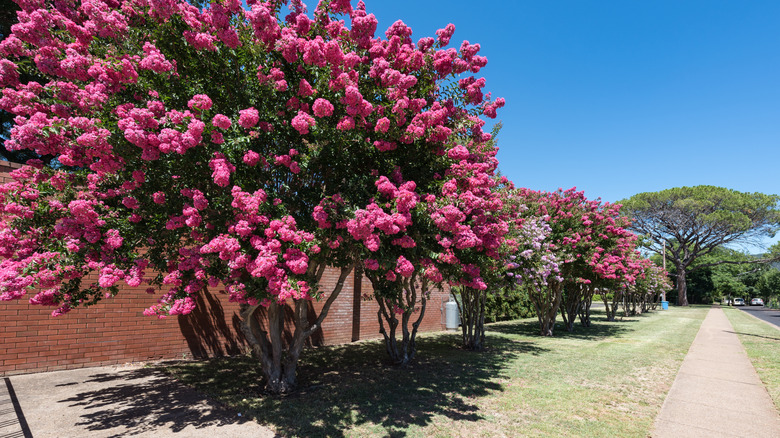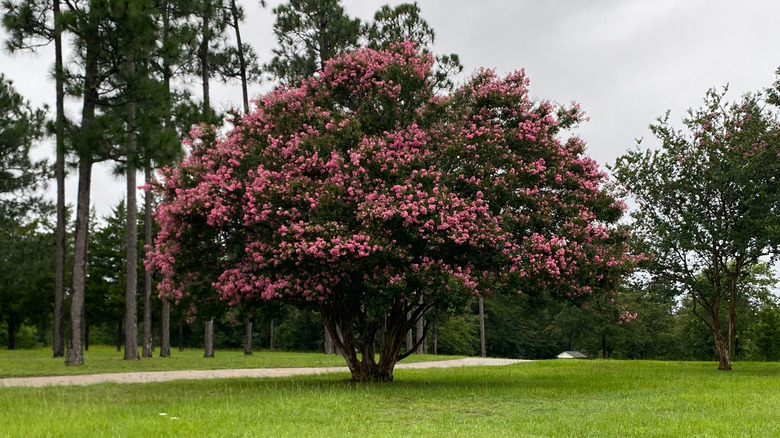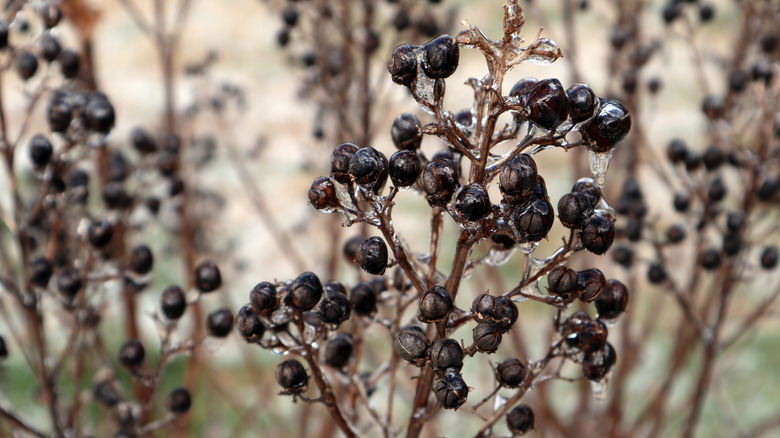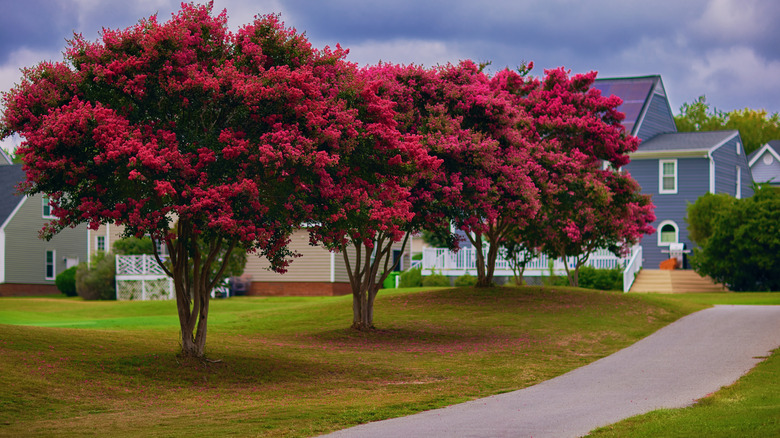Mistakes Everyone Makes When Growing Crepe Myrtles
With their stunning flowers and year round interest, it's easy to see why people love crepe myrtles. Unfortunately, well-intentioned gardeners often make mistakes that keep crepe myrtles from living up to their full potential. Some of the most common (but preventable) mistakes made when caring for crepe myrtle include over-pruning as a result of not considering the plant's mature size when choosing a cultivar, pruning at the wrong time of year, not considering how messy crepe myrtles can be when choosing a planting location, and failing to give the plant enough sun.
Native to China, Japan, and the Philippines, crepe myrtles (Lagerstroemia spp.) thrive in the United States in zones 6 through 9. Drought tolerant once established, crepe myrtles can thrive where many other plants falter, thanks to their deer resistance and pollution tolerance. But for all their great features, crepe myrtle can also turn into a nightmare, if you don't do your research before buying and planting.
Overpruning your crepe myrtle is a huge mistake
While it may be tempting to pick a crepe myrtle cultivar based solely on flower color and what is easily available, it's important to also keep in mind how much space you have in your landscape. While some crepe myrtles like 'Houston' stay as small as 2 feet, many others, like 'Muskogee' can reach over 20 feet. While these larger cultivars can be stunning if given enough space to grow, all too often they are planted in too small an area and then must be aggressively pruned to keep them to the desired size.
If your crepe myrtle tree or shrub starts to outgrow its spot, consider transplanting it instead of aggressively pruning it back or topping it. While heavily pruning crepe myrtles has long been a common practice, it is actually damaging to the trees and can significantly shorten their lifespan. Crepe myrtles that are allowed to grow to their natural size and shape are also far more beautiful year round, than those that have been aggressively chopped back.
Don't prune your crepe myrtle at the wrong time of year
While crepe myrtles certainly don't need to be pruned back severely, there are times when they can benefit from a bit of a trim. This is especially the case if the tree has sustained damage or has a lot of crossed branches or small suckers. While dead or diseased branches can and should be removed immediately, regardless of the time of year, most pruning should be done during late winter.
Winter is the best time of year to trim your crepe myrtle because pruning while your crepe myrtle is dormant is far less stressful for the tree than pruning during other times of year. Pruning in autumn can be particularly damaging. Don't worry about winter pruning preventing flowering — crepe myrtles bloom on new wood. They don't begin to make flower buds until they have broken dormancy in spring.
Give your crepe myrtle plenty of sun and mind the mess
When planting your crepe myrtle tree it's important to consider sun exposure. Full sun is essential for a healthy and thriving crepe myrtle, and the tree is unlikely to bloom well if planted in too much shade. Even worse, a lack of sun can make crepe myrtles vulnerable to disease.
You should also consider the mess crepe myrtles make when deciding on a planting location. This hidden downside of growing a crepe myrtle can turn the tree from a delight to a frustrating chore if you're constantly forced to sweep petals and leaves off of your patio and driveway, or clean them out of a pool filter. Be sure to consider the dropped petals and leaves in advance, and plant your crepe myrtle somewhere where the mess won't cause a problem. In the right spot, the colorful carpet of petals can even be considered a beautiful bonus instead of a frustration.



